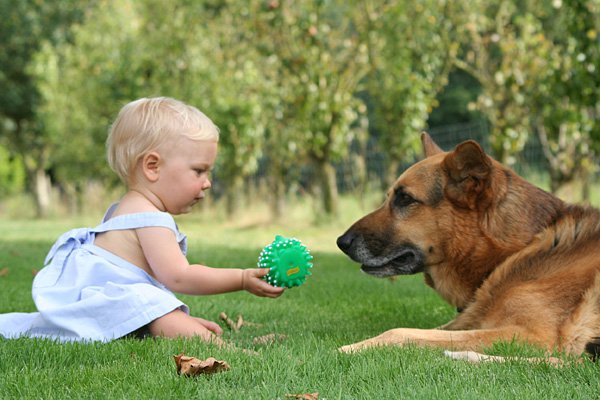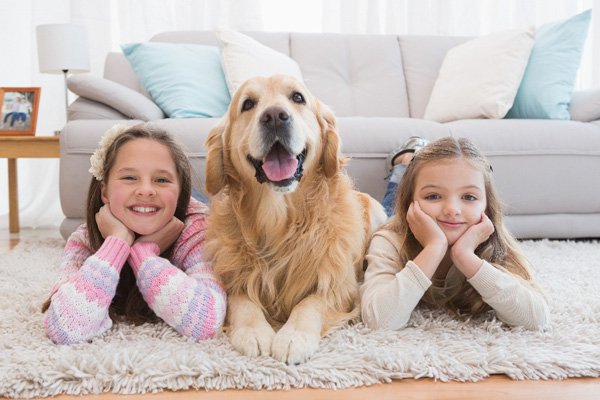

Separation anxiety is a serious problem that vexes many dog owners. In fact, this is the No. 1 reason people give for surrendering or euthanizing their dog. Separation anxiety (SA) describes an animal's extreme panic at being left alone or being away from you. This condition is typically characterized by destructive behaviors such as chewing, howling, barking and scratching. Your house and furnishings may fall victim to the destruction, but in many cases, your pet may even cause harm to itself in this panicked state. Read on to learn more about SA and how to help your pet recover.
Common Causes of Separation Anxiety
SA is common in rescue dogs and those that have been lost or abandoned. It may also occur as the result of a traumatic event such as a natural disaster or losing a loved one. The animal may have been separated from its mother too early, neglected or abused by a prior owner. If you bring a new family member (a new baby, for example) or pet into the home, this can also trigger a panic response. In some cases, however, SA develops for no apparent reason in a dog that has experienced a normal life.
Learn the Signs of SA
The symptoms of SA can vary greatly from animal to animal. In many cases, pet owners simply believe that their dog is behaving badly, or that they have been remiss in training it properly. If your pet follows you obsessively and can't tolerate having you out of sight, this may be an indication of SA. In many cases, however, the dog doesn't experience panic until you actually leave the house. The longer you're away, the more its anxiety grows.
It may become hyperactive and begin to pace, whine, howl, bark or chew on objects. In extreme cases, dogs have been reported to have broken down doors and jumped through windows as a result. Crated animals may break their own teeth or tear out their nails in an effort to escape. When you return home, your pet may run in circles, jump, whine or urinate, even if you were only gone long enough to get the mail or take out the garbage.
Strategies for Dealing with Separation Anxiety
Many vets recommend medication for severe cases of SA, but dog trainers don't typically agree. Medication should be the last course of action, when nothing else will help, because drugs only temper the symptoms instead of resolving the problem. Do see the vet to rule out any physical causes for the behavior, but then find an experienced, professional trainer in your area who has experience with dogs with SA.
The trainer will begin an intensive behavior modification program with your dog to teach it independence. He or she will work with you and your pet to desensitize the trauma of departure, and teach you to recognize your dog's behavioral cues. In most cases, this type of behavioral modification is extremely successful. Destructive and self-harm behaviors cease and you are left with a calm, confident pet.
Canine behavioral experts typically recommend a dog-training, boot-camp-type environment as the most effective way to overcome SA. It's critical, however, that the boot camp training is followed up with in-home sessions, where the trainer works with you and your pet in the dog's own environment. This reinforcement helps cement the new behavior patterns and prevents future relapse. Contact a professional dog training company in your area today for help in dealing with your dog's separation anxiety.
 Excellent Chicken Houses from Chicken Coops and Houses for Your Pet
Excellent Chicken Houses from Chicken Coops and Houses for
Excellent Chicken Houses from Chicken Coops and Houses for Your Pet
Excellent Chicken Houses from Chicken Coops and Houses for
 How To Stay Safe Around Horses & Avoid Unnecessary Accidents
How To Stay Safe
How To Stay Safe Around Horses & Avoid Unnecessary Accidents
How To Stay Safe
 Guide To Bird Seed
Guide To Bird See
Guide To Bird Seed
Guide To Bird See
 A Guide to Select the Best Vet for Your Adorable Pets
A Guide to Select the Best Vet for Your Adorable Pets
A Guide to Select the Best Vet for Your Adorable Pets
A Guide to Select the Best Vet for Your Adorable Pets
 Space and Shelter Needs for Your Horse – Keeping a Horse on Your Property
Space and Shelter Needs for Your Horse – Keeping a Horse on Your Property
Copyright © 2005-2016 Pet Information All Rights Reserved
Contact us: www162date@outlook.com